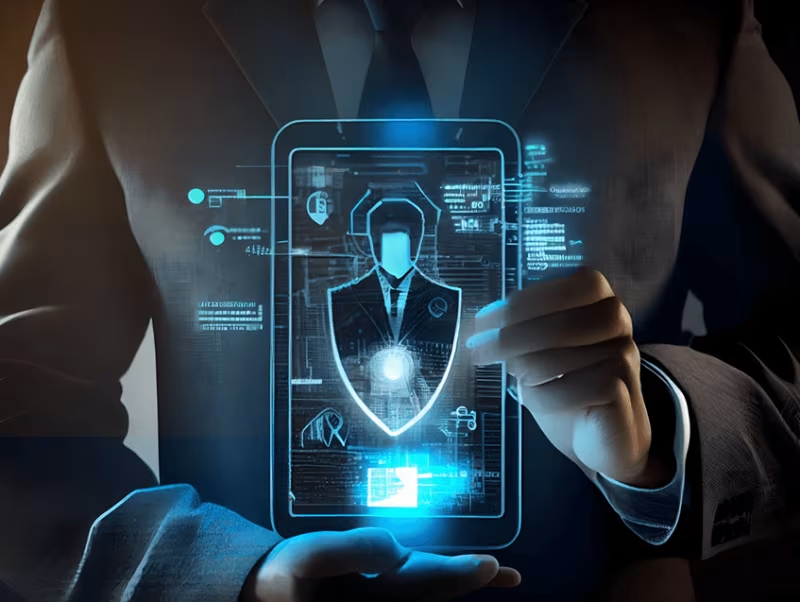Resource / Online Journal
Unveiling the Power of Multi-Factor Authentication in Identity Access Management
The synergy between Multi-Factor Authentication (MFA) and Identity and Access Management (IAM) is pivotal for robust cybersecurity. Integrating MFA into IAM significantly bolsters a company's security posture.
Published on Feb 26, 2024

In the face of the escalating threat of data breaches, identity theft, and hacking, the landscape of digital identity security has become more challenging than ever. The good news is that even in the event of hackers obtaining your username and password, there are effective measures you can take to significantly reduce the likelihood of your account being compromised. One such strategy gaining prominence is Multi-Factor Authentication (MFA).
What is Multi-Factor Authentication (MFA)?
Multi-factor authentication (MFA) is a security process that requires users to provide multiple forms of identification or authentication factors before being granted access to a system, application, or digital account. The goal of MFA is to add an extra layer of security beyond the traditional username and password combination, making it more difficult for unauthorized users to gain access.
The authentication factors in MFA typically fall into one of three categories:
Something you're aware of: Traditional passwords and Personal Identification Numbers (PINs) fall under this category.
Something You Have: This involves possessing a physical device, such as a security token, smart card, or mobile phone, that can receive authentication codes.
Something You Possess: This includes biometric information, like fingerprints, retinal scans, and facial recognition.
MFA requires users to provide at least two of these authentication factors, hence the term "multi-factor." By doing so, MFA enhances security by reducing the risk associated with a single point of compromise. Even if one factor is compromised (e.g., a password is stolen), the additional factors act as a safeguard, significantly strengthening the overall authentication process.
MFA provides an additional layer of defense, mitigating the risks associated with stolen or weak passwords and offering a more robust approach to protecting sensitive information and digital assets.
Why is MFA Important?
The advent of phishing and social engineering as prevalent cyberattack methods prompted the introduction of MFA. Phishing attacks that steal credentials through data breaches have cost businesses millions and pose a significant threat to individuals. Without MFA, an attacker with stolen credentials can gain access to a user's account.
Multi-factor authentication is a fundamental method to secure records, devices, and applications. Its multi-pronged approach ensures that even if a set of credentials is obtained, access is not guaranteed, enhancing overall internet security.
Despite the effectiveness of secondary authentication methods, attackers may employ social engineering to bypass MFA, especially when using PINs. The ongoing challenge lies in refining MFA systems to withstand social engineering attempts.
The Role of MFA in Protecting IAM
Integrating MFA into Identity and Access Management (IAM) significantly enhances your company's security. Adding a second layer of authentication on top of passwords requires users to provide two or more identifying credentials, reducing the risk of compromised access.
The Intersection of MFA and IAM
The synergy between Multi-Factor Authentication (MFA) and Identity and Access Management (IAM) is pivotal for robust cybersecurity. Integrating MFA into IAM significantly bolsters a company's security posture. By adding a second layer of authentication on top of passwords, users are required to provide two or more identifying credentials. This not only reduces the risk of compromised access but also establishes a more formidable defense against unauthorized entry.
In MFA-enabled IAM environments, access is contingent on the successful resolution of the MFA challenge. This approach ensures that even if valid user credentials are compromised, access will not be granted until the additional layer of authentication is successfully navigated. This is particularly crucial given that compromised credentials account for a significant percentage of data breaches.
Challenges of MFA in IAM
Despite its evident advantages, Multi-Factor Authentication (MFA) in Identity and Access Management (IAM) comes with its set of challenges. Decision-makers and end users may find MFA unappealing due to perceived inefficiencies in the sign-in process. The additional time required to sign in and confirm identity through a device or token may be viewed as cumbersome, especially if the subsequent element is a time-sensitive code.
Educating users about the importance and benefits of MFA becomes crucial in overcoming resistance. While push notification MFA presents an efficient alternative, it requires ongoing efforts to ensure user understanding and adoption.
Implementing MFA across an entire organization may pose logistical challenges. The absence of a centralized way to manage user identities and MFA or the introduction of additional vendors for this connection can complicate the seamless implementation of MFA in IAM.
The TechDemocracy Edge
TechDemocracy provides a comprehensive solution for cybersecurity needs, staying abreast of updates and advancements in identity governance. TDC's Identity Access Management goes beyond enhancing cybersecurity; it safeguards all digital resources from malicious attacks, offering a unique and robust defense against evolving threats.
Recommended articles

Take Your Identity Strategy
to the Next Level
Strengthen your organization's digital identity for a secure and worry-free tomorrow. Kickstart the journey with a complimentary consultation to explore personalized solutions.